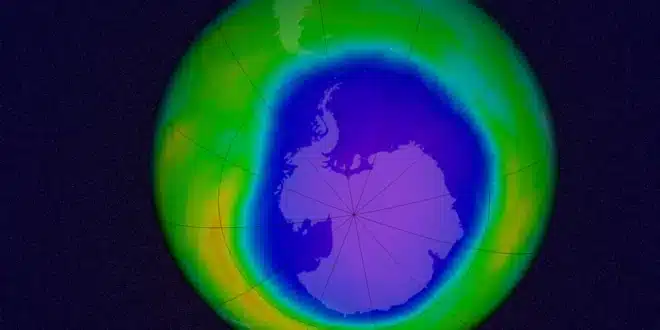In the 1980s, scientists were alarmed to discover that pollution had caused a hole in Earth’s protective ozone layer. After almost 40 years, researchers from the Copernicus Atmosphere Monitoring Service (CAMS) have observed a reduction in the size of this hole, suggesting that it may be on the path to recovery.
Recent atmospheric studies revealed that the hole over the South Pole took longer to form this year and is smaller than anticipated. The ozone layer, a thin shield of gas composed of three oxygen atoms, protects Earth by absorbing harmful ultraviolet (UV) radiation from the Sun.
In 1985, the British Antarctic Survey discovered a massive hole in the ozone layer over the South Pole. Each spring in the Southern Hemisphere, this hole reopens, allowing UV radiation to flood the Antarctic region. This poses a significant threat to wildlife like seals and penguins, which are at risk of sunburn due to the increased radiation.
Can the ozone hole fully recover?
Typically, the ozone hole is well-formed by mid-to-late August and closes by the end of November. However, this year’s data shows that the hole took longer to develop, starting only in September, and remained small throughout the season.
CAMS predicts that the ozone hole will continue to shrink for the rest of the year and could close entirely by December.
Laurence Rouil, director of CAMS, noted that various factors, from volcanic activity to climate change, influence the formation of the ozone hole. However, none are as impactful as human-made ozone-depleting substances. CAMS cautioned that while a slow start to the ozone hole’s formation is promising, it doesn’t necessarily indicate a full recovery of the ozone layer, much like colder-than-usual weather doesn’t reflect long-term climate trends.


